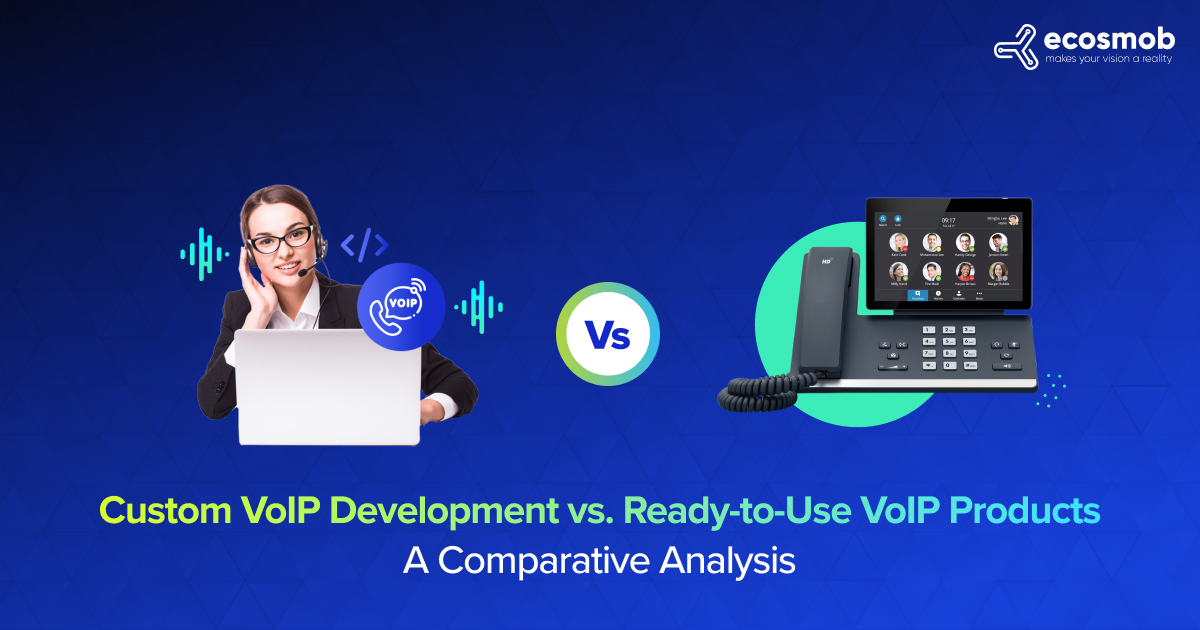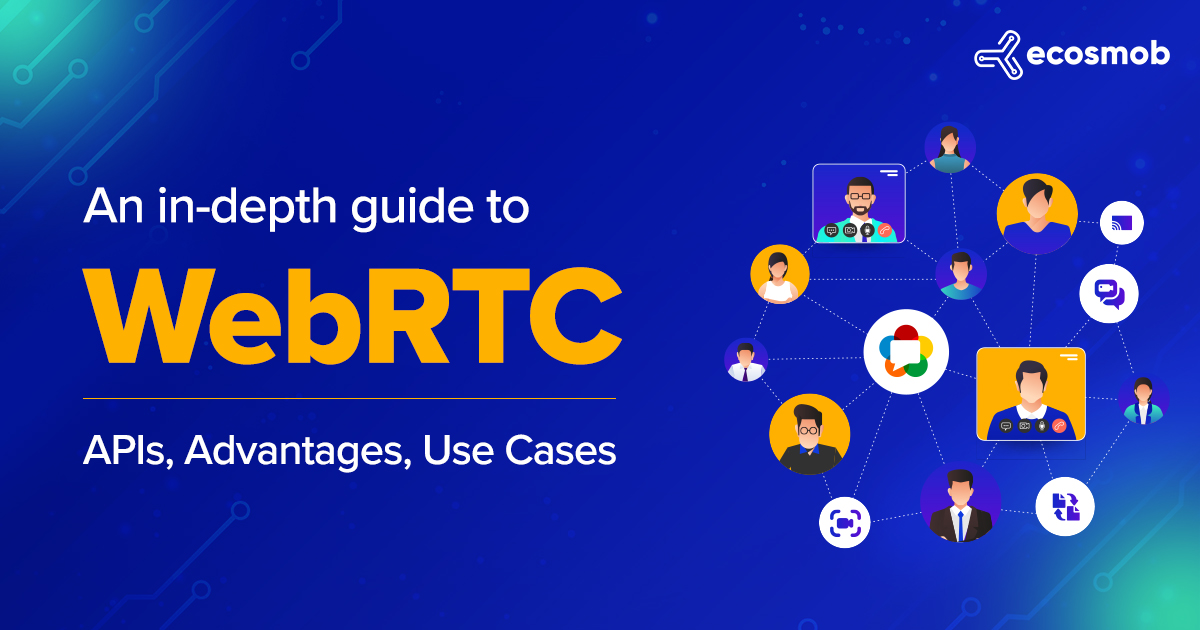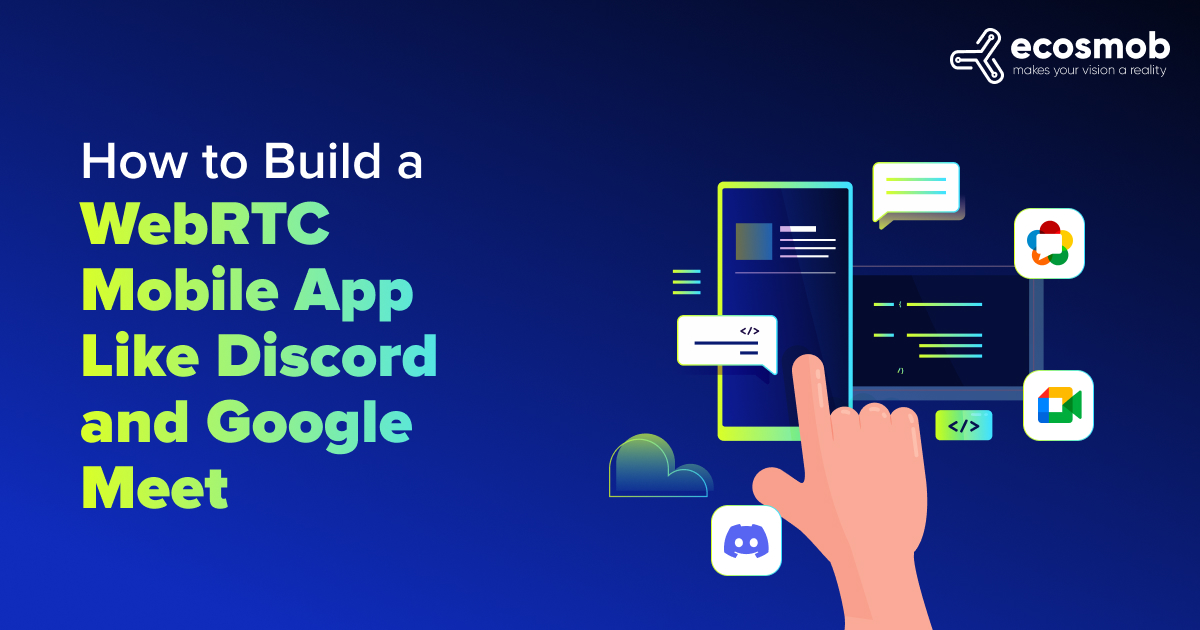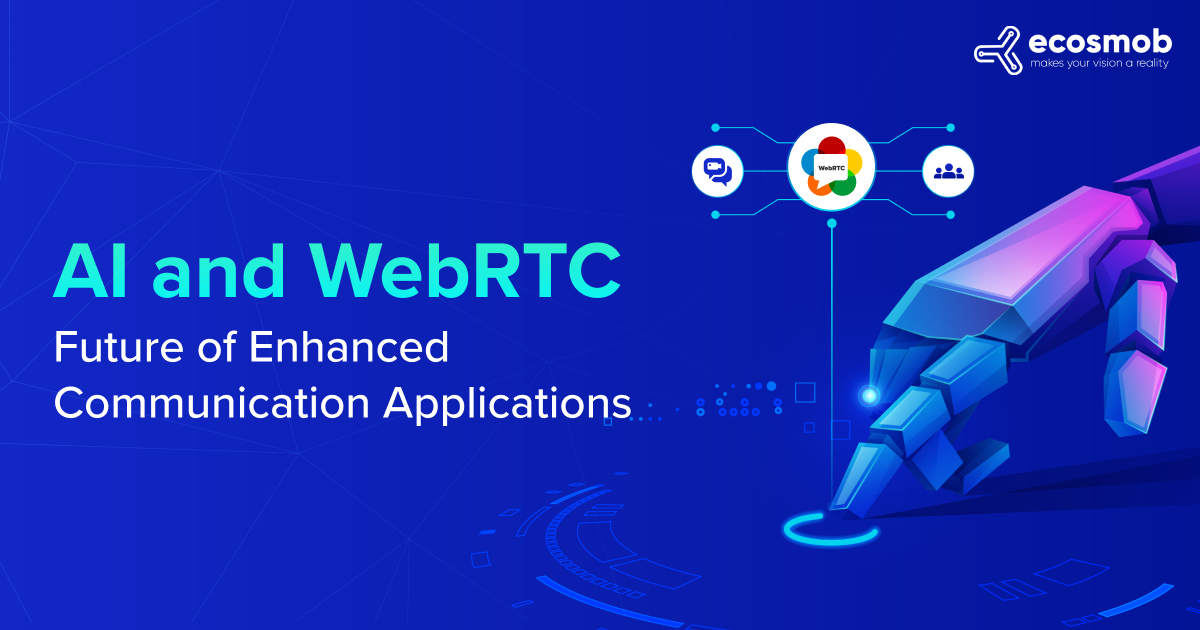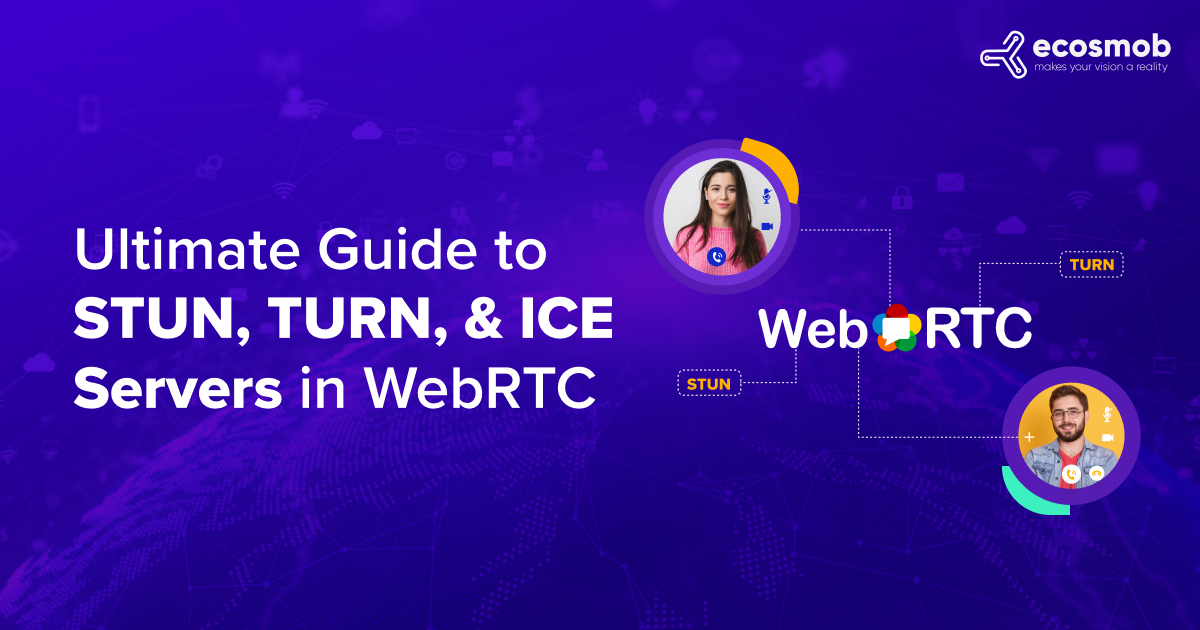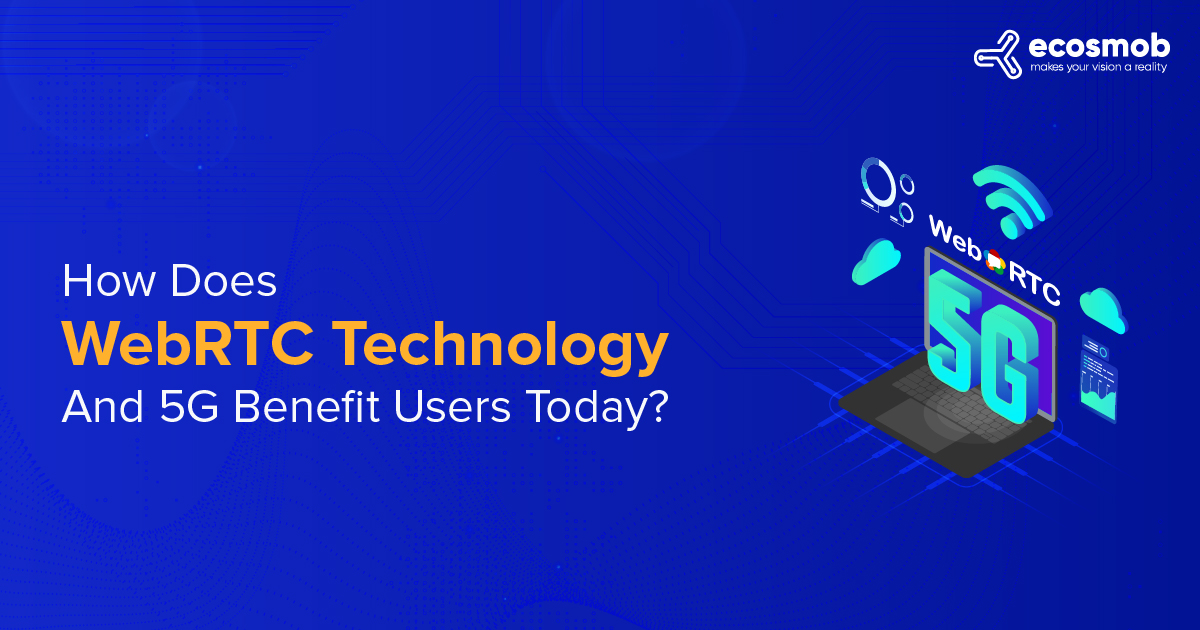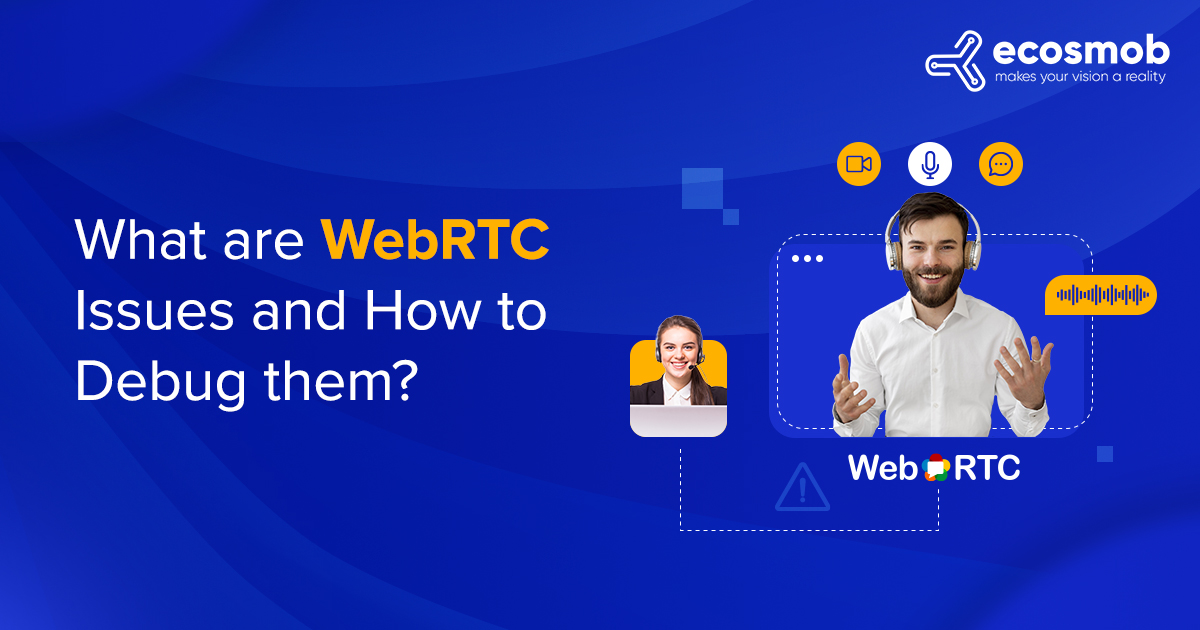What Is WebRTC?
WebRTC Development is a mechanism to enable real-time communication directly on the web. It is often said to be a simple yet complex process. In simple terms, when two browsers need to communicate, they need a server in between to coordinate communication. However, the complexity is that the server may delay said communication.
In order to keep it simple, Google built an open-source solution in 2011. WebRTC (Web Real-Time Communication) is a free and open-source project providing web browsers and mobile applications with real-time communication (RTC) via application programming interfaces (APIs).
WebRTC Solution Development is supported by major browsers like Chrome, Firefox, Safari, Opera, and Microsoft Edge platforms like Android and iOS. It does not need any external plugins installed in your browser, as the solution comes bundled with the browser.
Furthermore, in a typical real-time application involving video and audio transmission, there is heavy dependence on C++ libraries, including resolving problems like packet-loss concealment, echo cancellation, bandwidth adaptivity, dynamic jitter buffering, noise reduction, and suppression, etc. But WebRTC Solution Development handles all these concerns under the hood, making it simpler to make real-time communications between clients.
This blog will take a holistic view of WebRTC’s work, vulnerabilities, benefits, and use cases.
How does WebRTC work?
If you wanted to build a WebRTC solution that allowed voice or video calling a few years ago, you would have used C/C++. This would involve long development cycles and high development costs. WebRTC changes all that – it replaces C/C++ with a Javascript API.
WebRTC makes use of 3 main Javascript APIs:
- Media Stream: It acquires audio and video by accessing your device’s camera and microphone.
- Peer Connection: It communicates audio and video. Allows peer-to-peer audio and video communication. This includes establishing the initial connection, and monitoring and closing the connection.
- Data Channel: It communicates arbitrary data. Enables bidirectional transfers of data between two peers.
These APIs allow browsers to use and send audio, video, and data to other browsers or endpoints.
Is WebRTC Secure?
The open-source nature of WebRTC is a common reason for concern about security and WebRTC leaks. However, end-to-end WebRTC encryption or let’s say, Custom WebRTC development is possible. There are multiple layers of WebRTC security, and WebRTC encryption is mandatory because real-time communication requires that WebRTC connections are established a bit differently than Internet communication connections.
While WebRTC Solution is secure for end-users, it is more complicated for developers. Secure Real-Time Protocol (SRTP) encryption and other security standards are mandated for all WebRTC sessions. And creating unencrypted WebRTC connections is forbidden by the Internet Engineering Task Force (IETF) standards.
WebRTC development security consists of three mandatory encryption specifications: SRTP, secure encryption key exchange, and fast signaling. These protocols encrypt the data sent through WebRTC, protect the encryption keys, and secure the webserver WebRTC Development connection. And these are required for every WebRTC session. Together, they form the protocol layer security for WebRTC communication.
Here are a few things to be considered during a WebRTC application development to make it secure:
Mandatory Media Encryption
To send video, voice, or data between two peers in WebRTC, the information must be encrypted with SRTP so no one can decode the message without the proper encryption keys.
Mandatory Secure Encryption Key Exchange
WebRTC specifications mandate a secure setup of the encryption channel to make it challenging to obtain the encryption keys. Several key exchange mechanisms may leverage the signalling channel to transmit data. If the signalling channel is compromised, the data could be unencrypted by a third party. To prevent this possibility, specific channels are used where keys are exchanged directly between peers.
Secure Signalling
A secure connection between the web server that handles signalling and the peer client is an absolute must to help to keep the information in that signalling channel secure. This makes it more difficult for an attacker to act as a man-in-the-middle and quietly take over the session.
HTTPS
WebRTC is further secured by operating in a browser sandbox. Web browsers are the most commonly used applications and have developed sophisticated security and privacy features. Use of HTTPS is required to access WebRTC features. Signalling is also secured using the HTTPS protocol, which most websites now use.
Media access permissions
Users must explicitly grant permissions to individual sites before accessing camera, microphone, or screen-sharing video.
Also Read: What Are WebRTC Issues and How to Debug Them?
Visual usage indicators
Prominent indicators must show when your camera, microphone, and screen sharing are being used.
Anonymizing device information
Device information remains hidden until the user has given some permissions for the site.
IP leakage protection
Limitations and options on sharing IP address information helps avoid privacy and tracking issues.
Mobile Operating Systems
Many native mobile applications also incorporate an embedded browser framework to utilize some or all of the above features. Even if not using an embedded browser, major mobile operating systems like Android and iOS implement similar controls and have additional security and privacy checks through their app store submission procedures.
Implementing these features varies, but most are now similar across major browsers.
Benefits of WebRTC Development
WebRTC brings many benefits to the user, integrator, and developer that have been less available in past communications and collaboration platforms. Here are a few:
WebRTC is free
Being an open-source application programming interface, it is free of cost to the end-user. Besides, thousands of developers are working on it in tandem, which means it is getting better with each passing second.
Easy accessibility
WebRTC is accessible through any device or platform. You don’t need any specific hardware, application or operating system to use WebRTC. Any WebRTC-enabled browser can connect in real-time to another WebRTC-enabled device.
Secure audio & video
With WebRTC mandated to use SRTP at all times to authenticate and encrypt voice and video content, it has zero unwanted intrusions and hence exceptionally high-quality media. It can also adjust communication quality, bandwidth and traffic flow whenever network conditions change.
Reliable session establishment
WebRTC supports reliable session establishment avoiding server-relayed media delays and reducing latency and increasing quality. It also reduces the server load.
Interoperability with VoIP and video
The biggest value of WebRTC is its interoperability with existing voice and video systems. This includes devices using SIP, Jingle, XMPP, etc.
Rapid application development
Developers will experience a streamlined development process, reducing application implementation time. Detailed knowledge of WebRTC will not be necessary because of the standardized APIs.
No plugins
Most real-time communication technologies need a plugin to make calls using a browser. The end-user must install these plugins on the browser which degrades the experience. Most browsers support WebRTC without any plugins.
Screen sharing
WebRTC video chat applications enable sharing a screen remotely with another device or user who has appropriate access. The standard provides built–in systems for capturing user content, such as screen sharing.
Easy to embed
Under WebRTC, you can create any content management interface in HTML5 and JavaScript. Any software development can now easily embed WebRTC. It also eliminates much of the in-house manual integration work required of the IT department.
Industries Utilizing the Power of WebRTC Development
The way we communicate has been transformed since the advent of the Internet and it keeps getting better with newer, improved, and more secure ways of peer-to-peer communication. WebRTC is a game-changer in many ways for several industries. Here are a few that have benefitted vastly from this open-source technology:
Contact Centres
A contact center’s primary need is powerful web calling capability. This improves the customer experience and helps simplify IT operations and increases agent productivity. WebRTC drives all this and much more with its seamless adaptability to any network condition.
It is easiest to find WebRTC-powered web calling on enterprise websites within any vertical market. Web calling helps improve customer experience (CX), minimize telephony costs, and simplify customer service operations. This helps contact center operators handle customer service smartly, smoothly, economically, and efficiently.
E-Commerce
Imagine being able to directly chat with someone via Whatsapp when you click a button on the website that you have been looking at. WebRTC facilitates direct and better communication between businesses and consumers with its ease of communication. Shopping websites can even use video conferencing or interactive trial of goods with the help of WebRTC.
Healthcare
Several healthcare providers have made use of WebRTC to get closer to consumers and provide prompt services and care. Right from online consultation with doctors via video conferencing, booking online health check-ups or availing of same-day delivery of medicines, all this and much more has become so much easier because of WebRTC.
Entertainment
Augmented Reality, Virtual Reality and online gaming have all profited from WebRTC. Real-time communication, however, is just emerging in the entertainment industry. But then, there have been several examples of how players can chat or even speak to each other while in the game, which just means good use is being made of the technology.
IoT
WebRTC in IoT has majorly facilitated audio and video calls within messaging services. Typical applications of WebRTC perceived as device-to-person are related to surveillance cameras, baby monitors, and video doorbells. WebRTC allows users to see or hear what’s happening on the other side.
Device-to-cloud covers cases of automation. For example, the combination of WebRTC and IoT is suitable for any sphere where drones identify malfunctions and provide comprehensive control. Here WebRTC ensures the flow of the process in real-time.
Online Education
Adaptation of the WebRTC technology has enabled most educational institutions worldwide to provide education 24/7, in the worst of situations (like Covid19 pandemic). Through this technology, students and teachers have been able to attend classes via video conferencing.
Also Read: How WebRTC Video Conferencing Works In Different Industries?
Advantages of WebRTC Development for Businesses
- Implementing audio and video conferencing easily facilitated through WebRTC has helped provide face-to-face interactions with added features like screen sharing, co-browsing, and shared whiteboards.
- Managing corporate communication used to be a complicated and expensive job. Today, with new technologies, it has become increasingly easy and accessible to everyone, without the need to incur considerable expenses on hardware installations or software updates.
- WebRTC is one of these new technologies and has therefore revolutionized international communications. It is now possible to put two people to communicate in real-time via a simple browser connected to the Internet.
- Another area where WebRTC perfectly finds its feet is customer service. If you plan to grow in the eCommerce market, leverage this technology to provide tailored video and audio consultations spanning product descriptions, special offers, payment option details, and more.
- Computers, mobile phones, or tablets now make calls. It does not matter; the quality remains the same, and neither party will see the difference.
Use Case of WebRTC
There are several compelling use cases of WebRTC and how it has benefitted businesses and customers alike. WebRTC facilitated peer-to-peer communication over the internet, especially for video and audio calls.
Use cases, for WebRTC now include text-based chats, file sharing, and screen sharing. Even industry giants like Microsoft Teams, Skype, Slack, and Google Meet now use WebRTC.
Classes also conducted via video conferencing for nearly two years during the Covid19 pandemic leverage the capability of WebRTC to educate students distantly.
WebRTC has been the harbinger of significant changes in the healthcare industry. Patients can now consult Doctors and get their tests done without stepping out of their homes’ comfort through services like Practo, 1MG, and Apollo Pharmacy.
Conclusion
WebRTC has already gained universal acceptance. Most browsers and Android and iOS mobile operating systems WebRTC for voice and video calling.WebRTC standards have stabilised and addressed vital areas such as security, encryption, and connection establishment. It enables endless possibilities and opportunities and provides the ability to instantly engage with customers directly in new ways helping slash travel and communications costs.
Take Your Business to the Next Level with WebRTC Development



